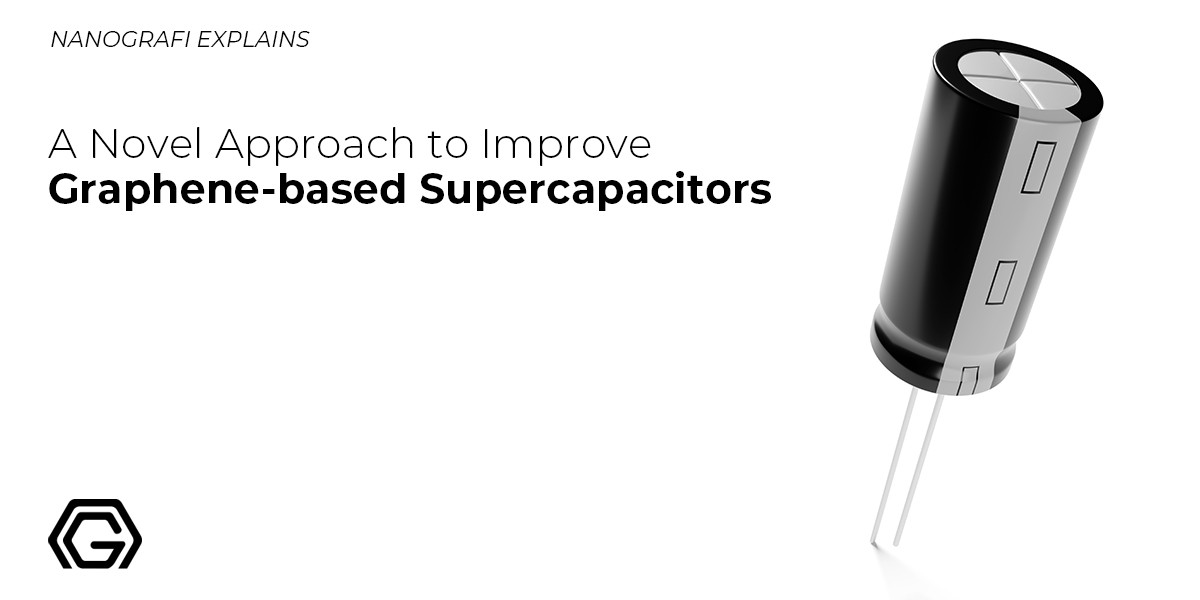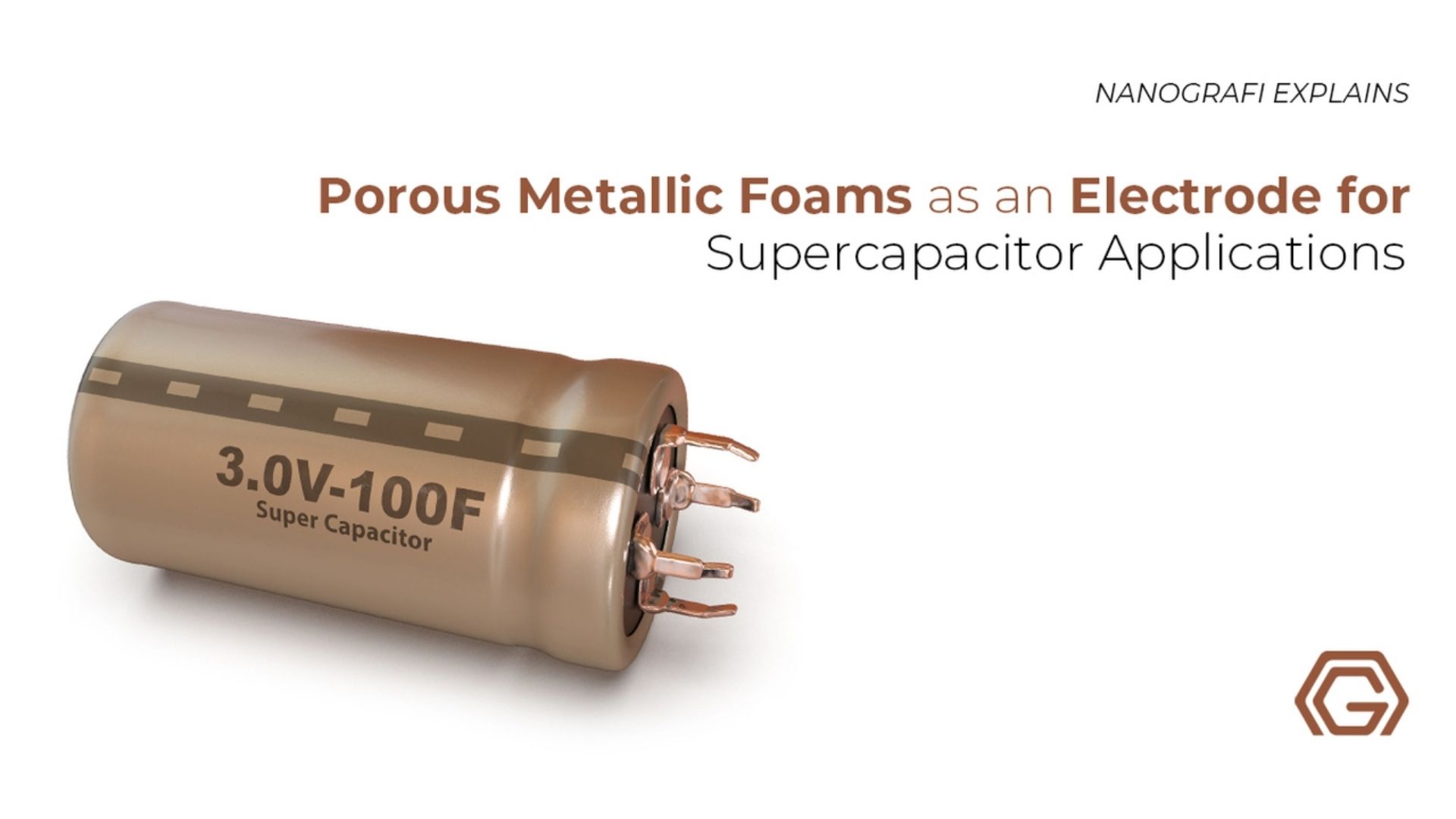A Novel Approach to Improve Graphene-based Supercapacitors
There has been a growing demand for integrated energy storage devices since the world, science, industry, and technology feel more dependent on wireless and portable electronics and there is an urgent and serious demand for sustainable energy sources including wind and solar energies.
Introduction
This trend has been causing a sort of exceptional demand for highly progressed energy storage technologies like reliable and maintenance-free batteries and more specifically, supercapacitors with excellent power density capability for storing energy.
Challenges of Energy Storage and Supercapacitors
In principle, supercapacitors are considered high-potential candidates to get over the issues of energy storage mostly because of their environmentally friendly nature and their long-term recyclability properties. There are ongoing research projects in order to improve the quality and capacity of supercapacitors so that they can take care of the huge demand for devices with increased storage capacity. The answer to this class of devices might lie in designing graphene-based solid-state supercapacitors capable of processing redox reactions via in situ electrochemical treatment. The idea of graphene-based mainly originates from the need to explore the operations and capacities beyond the limitations of the current technology with resulting unforeseen benefits. It should be noted that processing such a capability would not be possible without a deeper understanding of the principal reason based on smart scientific appreciation.
Supercapacitors are traditionally manufactured using liquid electrolytes that can be prone to leakage and are not available as they are miniaturized. This trend brings about prompts in research into solid-state and gel-based electrolytes. Therefore, it is crucial for an enhanced energy storage device to be manufactured based on tailoring electrolytes composed of novel carbon-based electric materials including graphene, oxide graphene, and carbon nanotubes. Technically, graphene or graphitic carbon could be fabricated on surfaces out of silicon directly with profound potential to be designed on-chip supercapacitors capable of being embedded into integrated systems. The studies so far, have indicated that there exists a simple pathway to remarkably increase the quality and performance of supercapacitors designed on gel-based electrolytes as the key to manufacturing quasi-solid-(gel) supercapacitors. This ongoing approach comes up with a novel technique to develop highly miniaturized on-chip energy systems perfectly compact electronics and get over the demand for highly qualified energy storage systems.
What is a Supercapacitor?
A supercapacitor is a capacitor with a high capacity to go over the voltage limit and bridge the gap between rechargeable batteries and electrolytic capacitors. A typical supercapacitor can store 10 to 100 times more electrical energy per unit volume or mass than other capacitors like electrolytic capacitors and is capable of accepting and delivering electrical charge much faster than batteries with the ability to be used upon multiple charges and discharge cycles compared to rechargeable batteries. Supercapacitors have found applications in numerous charge/discharge cycles using long-term energy storage devices like those used in trains, buses, automobiles, elevators, and so on where they are employed for regenerative braking with a limited range of storage. In this case, smaller units are applied to backup power for static random access memory. Despite normal capacitors, supercapacitors don't use solid dielectric instead, they run on electrostatic double-layer capacitance and an electrochemical pseudocapacitance with both of them capable of contributing to the total capacitance of the capacitor with slight differences.
To find out more, you can read Porous Metallic Foams as an Electrode for Supercapacitor Applications.
Graphene Oxide-Based Supercapacitor
There is a fact that today's state-of-art graphene electrodes designed especially for supercapacitors are still far beyond meeting the requirements of the commercial sector in terms of high energy. Moreover, achieving electrodes for high-energy supercapacitors is still challenging since graphene-based electrodes are fabricated by modifying graphene chemically. The fact is that modified graphene electrodes show lower conductivity compared to the ideal graphene and have restricted electrochemical active surface area mostly because of restacking of two consecutively that hinders the access of electrolyte ions and the consequent low energy density loss. One way to get over the restacking problem and achieve high electrical conductivity is to employ reduced graphene oxide scrolls, and thiol-functionalized and nitrogen-doped electric materials for a supercapacitor with an electric double layer. This supercapacitor appears to show a practically high energy and power density operating in a voltage range of 0 to 4 volts and a remarkable cyclic stability of as high as 20,000 cycles. This novel supercapacitor based on graphene could be employed for Next Generation energy storage devices by combining the scroll-based electrode and electrolyte material so appropriately and efficiently with high energy density 1.
Considering the chemical structure, graphene oxide is most similar to graphene itself with both having a hexagonal carbon lattice. However, the graphene oxide sheet is generally distorted where it binds to oxygen groups. In fact, graphene oxide is considered the number one source for the large-scale production of graphene over the years with growing applications including the transparent conductor, inorganic photovoltaic cells, and potential materials for the electrode in Lithium-ion batteries. So far, numerous theoretical models have been suggested for the fundamental determination of the graphene oxide structure in the literature with a lot of controversies. The main reasons for all the controversy in the structure of graphene oxide are the sample-to-sample variability of two different synthesis methods, the amount of amorphization, the degree of oxidation, the non-stoichiometric nature of graphene oxide as well as the limited resolution in the employed characterization techniques. Despite all the efforts and the failures in suggesting a comprehensive structural description, the precise determination of graphene is still worth studying since it can considerately improve the understanding of the reduction and functionalization leading to promising outcomes in graphene synthesis and production 2.
Curved Graphene-Based Supercapacitor as a Novel Approach
In a newly reported method, a supercapacitor equipped with graphene-based electrodes can possess a specific energy density of 85.6 Wh/kg at room temperature regarding the total electric rate with the measured current density of 1 A/g the can be compared to the energy density of the nickel metal hydride battery. However, this supercapacitor has the ability to be charged and discharged in the course of a few seconds and minutes and multiple times. The key factor to achieving this class of supercapacitors is following the ability to fully utilize the highest intrinsic surface capacitance and specific surface area of graphene with a single layer by preparing curved graphene sheets without being restocked through the process. This morphology makes it possible to prepare mesopores available for environmentally-friendly ionic liquids to operate at lower voltages 3.
Conclusion
Supercapacitors are indeed very attractive sources of power and energy storage devices and compared to batteries, they are completely maintenance-free with a longer cycle life that requires a very simple charge circuit with no memory effect and much performance. Physical energy storage plays a significant role in a supercapacitor's operational safety and exceptional life cycle. Particularly, capacitors can be charged and discharged multiple times at higher rates with applications in electric vehicles which are at the center of attention of the transportation industry today. Supercapacitors can also be coupled with batteries or fuel and solar cells to transmit electrical energy and power within to power hybrid transportation devices.
To discover the latest articles in supercapacitors, you can visit Blografi.
References
Analyzed: Graphene Supercapacitors - Nanografi Nano Technology. (n.d.). Retrieved April 19, 2024, from https://nanografi.com/blog/analyzed-graphene-supercapacitors/
Application of Boron Doped Graphene as electrode material for supercapacitors - Nanografi Nano Technology. (n.d.). Retrieved April 19, 2024, from https://nanografi.com/blog/application-of-boron-doped-graphene-as-electrode-material-for-supercapacitors/
Liu, C., Yu, Z., Neff, D., Zhamu, A. & Jang, B. Z. Graphene-based supercapacitor with an ultrahigh energy density. Nano Lett.10, 4863–4868 (2010).
Luo, H. A Theoretical Study of Graphene Oxide Chemical Structure. 44 (2017).
Porous Metallic Foams as an Electrode for Supercapacitor Applications - Nanografi Nano Technology. (n.d.). Retrieved April 19, 2024, from https://nanografi.com/blog/porous-metallic-foams-as-an-electrode-for-supercapacitor-applications-f0439f/
Rani, J. R., Thangavel, R., Oh, S. I., Lee, Y. S. & Jang, J. H. An ultra-high-energy density supercapacitor; fabrication based on thiol-functionalized graphene oxide scrolls. Nanomaterials9, 1–12 (2019).
Recent Posts
-
Turning Noise into Power: Energy Harvesting with Piezoelectric Nanogenerators
Ambient acoustic energy, once an untapped resource, is now being converted into sustainable electric …5th Mar 2025 -
Holey Super Graphene in Li-ion Batteries: Next Generation of Energy Storage
Holey Super Graphene (hG), also referred to as “holey graphene,” is redefining li-ion ba …7th Feb 2025 -
Future Communication with 5G Technology and Advanced Materials
5G technology opens the doors to a new era in communication with faster connection speeds, low laten …6th Feb 2025







